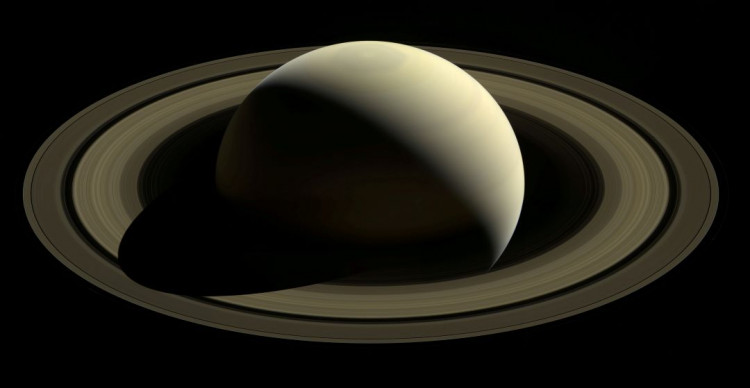The presence of methane on one of Saturn's moons, Enceladus, could be a sign of life in its subsurface sea, according to a study,
The National Aeronautics and Space Administration's Cassini probe recorded geysers blasting particles of water ice into space from "tiger stripe" fractures near Enceladus' south pole.
That material, which produces a plume that feeds Saturn's E ring (the planet's second-outermost ring), is assumed to emerge from a vast ocean of liquid water beneath the moon's icy shell.
Cassini saw many compounds during numerous close flybys of the 313-milewide (504-kilometer) Enceladus, like dihydrogen and a variety of carbon-containing organic compounds, including methane.
Some Earth microbes use dihydrogen to generate methane from carbon dioxide, a process known as methanogenesis. Something similar could be happening on Enceladus, especially since Cassini discovered carbon dioxide, as well as a surprising amount of methane, in the moon's plume.
"We wanted to know: Could Earth-like microbes that 'eat' the dihydrogen and produce methane explain the surprisingly large amount of methane detected by Cassini?" study co-lead author Régis Ferrière, an associate professor in the University of Arizona's department of ecology and evolutionary biology, said.
Previous research has indicated that Enceladus has the necessary components to host life. It has an underground ocean that provides warmth. Scientists believe there are similarities between the plumes of Enceladus and hydrothermal vents on Earth's ocean floor.
Ferriere and colleagues employed mathematical models to discover which mechanisms may account for the Cassini methane data.
"They conclude that Cassini's data are consistent either with microbial hydrothermal vent activity or with processes that don't involve life forms but are different from the ones known to occur on Earth," the university said.
The researchers aren't claiming that life exists on Enceladus, but they do suggest that microbes could be one plausible interpretation for the data. More studies will be needed to assess whether our long-sought hunt for life beyond Earth will find success on Saturn's moon.
Enceladus isn't the only planet in the solar system riddled with methane mysteries. NASA is investigating why the Curiosity rover on Mars detects methane near the ground but an orbiting satellite misses the gas higher in the atmosphere.





